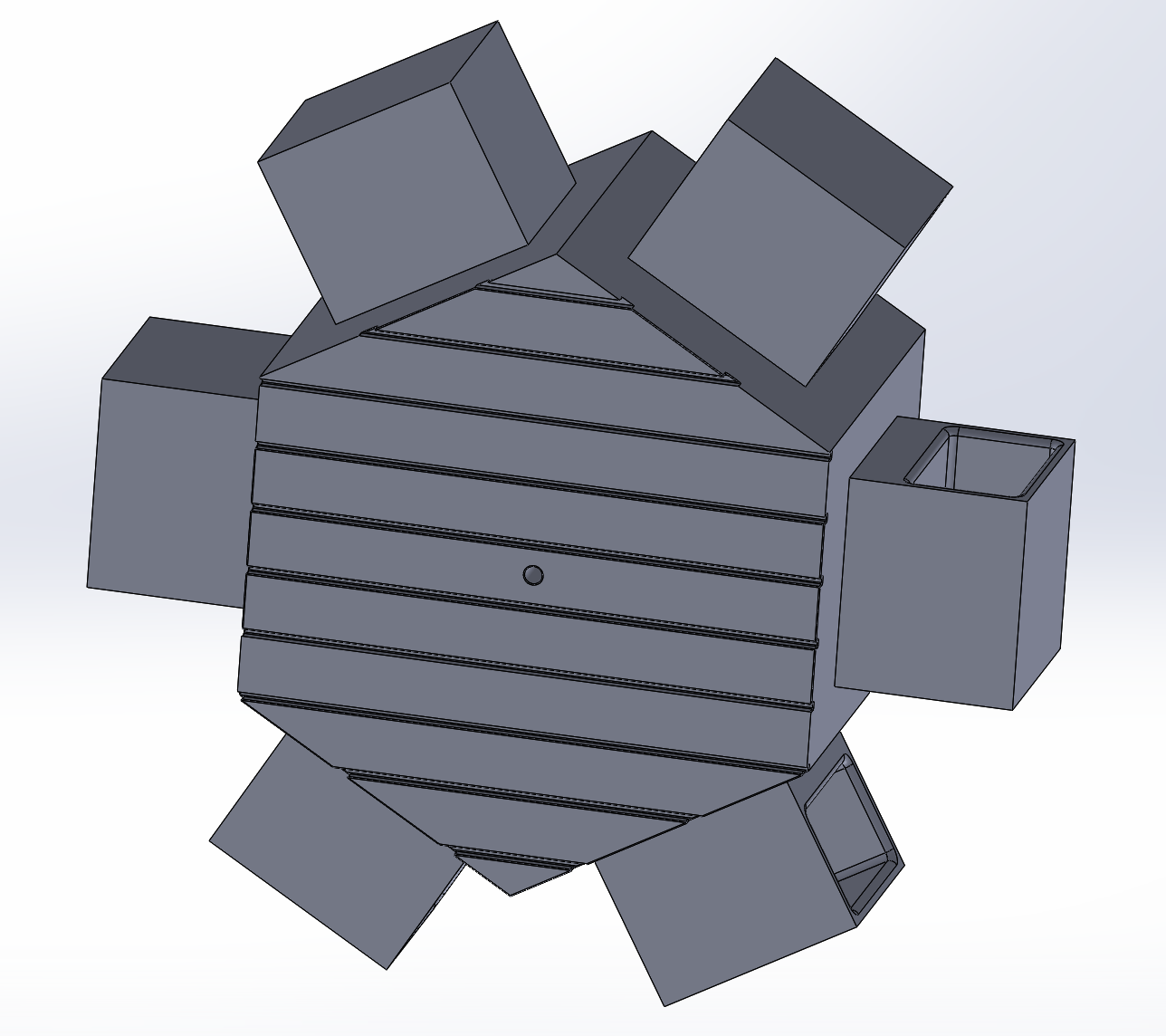For my final presentation, I created a water wheel with the aesthetic of brutalism.
Some key aspects of my aesthetic that I wanted to capture in my design is the harsh, geometric lines characteristic of brutalism and a concrete-inspired texture and color also a staple of brutalism architecture. An inspiration picture of brutalism architecture is shown below.[1]

Boston City Hall (built in 1969)
This picture was very inspirational for my design as it features the lines in between the concrete that give it a sense of the size of concrete blocks it has, a washed and matte grey color and harsh geometric lines, but not all necessary simple blocks (it does have some interesting shapes to it).
My inspiration picture for the “what” of my project was the closest I could find to a water wheel.[2]

Like the above picture, my design will take water from above and then spin on a shaft. My design specifications for this dynamic final project were the following:
- Must fit within the print bed of a Lulzbot.
- Must be reasonable scope and manufacturing time since I have a full-time job and have to travel to Boulder in order to do manufacturing.
- Needs to be fairly lightweight, so that it rotates smoothly with small waterflow.
- Must be able to be painted on since I want to apply a very specific texture to meet my aesthetic.
- Should be waterproof and able to be integrating into an outdoor environment such as a garden or outdoor pond.
I used CAD as my primary way to detail out my design and also used the CAD files to 3D-print the parts for assembly.

As you can see from the picture, it has a hole for the metal shaft and involved 7 3D printed parts in total. The main base is a hexagonal shape instead of a traditional rounded shape of a water wheel and is all one solid part with lines that simulate the brutalism architecture of putting blocks of concrete together. This contrasts all other water wheels I’ve seen that have been this pretty open structure with support beams. The water buckets on the side I also designed to look like concrete boxes from the side so they are perfectly rectangular and have some hidden holes where the water can accumulate until it rotates. I also have a water pouring system that will pour water into it and am still currently working on integrating it with something in my grandmother’s garden, so that it can have some use instead of being all for aesthetics. The final design used a textured, concrete spray coating in order to accomplish as close as possible to a concrete-look. While I looked into molding with actual concrete, I decided that it would be too heavy to work considering I will not have a consistent, high flow water source. The final product can be seen below where it tried to incorporate as much of my vision as possible.
Here are a few pictures of my final project as it turned out:


And two videos of my project:
[1] https://www.google.com/url?sa=i&url=https%3A%2F%2Fwww.gq.com%2Fstory%2F9-brutalist-wonders-of-the-architecture-world&psig=AOvVaw0hd7WhPt-iNi_d4QqUOUIy&ust=1682683586129000&source=images&cd=vfe&ved=0CBAQjRxqFwoTCLjwtv2Cyv4CFQAAAAAdAAAAABAE [2] https://i0.wp.com/www.aesdes.org/wp-content/uploads/2023/03/paddle-wheel-driven-water-playground-229512270.jpg?w=1600&ssl=1

1 Comment. Leave new
This is a really cool idea and I’m excited to see how it turns out. Will you have some sort of setup for it like in the picture that you are using for inspiration?